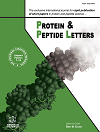
Full text loading...

Leukemia is one of the most prevalent malignancies worldwide that causes the unusual evolution of hematopoietic stem cells. The type of leukemia determines the optimal treatment plan and the patient's survival. However, finding safer and more effective medications and developing novel therapeutic strategies are still the most challenging research topics. Nowadays, over half of the medications used to treat cancer are derived from natural ingredients. Medicinal plants are a reliable natural source of anti-leukemic medications. Plant-derived biologically active compounds, including secondary metabolites, have long been considered extremely valuable for treating various human illnesses. However, the limitations of secondary metabolites have led scientists to seek alternative biologically active compounds. Plant-derived proteins and peptides have recently been explored as potential treatments for various human ailments, showing anti-microbial, anti-oxidant, anti-HIV, anti-cancer, ribosome-inactivating, and neuromodulatory properties. Until now, no review article has documented the biologically active proteins and peptides against leukemia. This review article explores the therapeutic properties of plant-derived proteins and peptides against leukemia.

Article metrics loading...

Full text loading...
References


Data & Media loading...